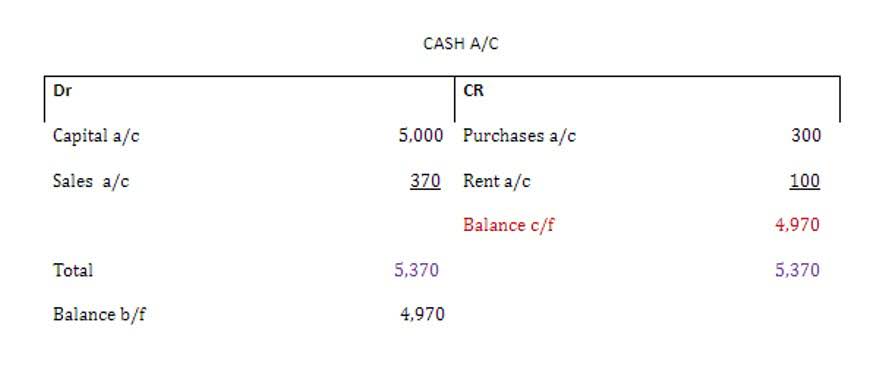
This process may occur at different intervals based on several factors, including the company size, volume of transactions, etc. The general ledger should include accounts for both balance sheet and income statement items, such as assets, liabilities, revenues, and expenses. By consolidating all financial activities into one comprehensive ledger, businesses can better manage their financial records.
Posting Date in Accounting Systems

Posting only transfers the posting definition in accounting total balance in a subledger into the general ledger, not the individual transactions in the subledger. An accounting manager may elect to engage in posting relatively infrequently, such as once a month, or perhaps as frequently as once a day. Businesses must balance every financial transaction, ensuring the sum of the credits is always the same as the sum of the debits. In other words, they must ensure that they debit the corresponding account every time they credit one. Each account within the general ledger is structured to show increases and decreases, often conceptualized as a “T-account.” The left side represents debits, while the right side represents credits.
- Understanding transaction dates and their role in posting dates is essential for accurate financial reporting.
- However, if an accountant or bookkeeper make sub-ledgers or T accounts for all.
- Credits increase balance sheet liability accounts, shareholders’ equity accounts and sales accounts.
- The first step in the accounting cycle starts by identifying events and analyzed them to see how they affect the accounting equation.
- This is the date on which the transaction actually occurred, whether it was a sale, a purchase, or some other type of financial activity.
- Postings can be made (1) at the time the transaction is journalized; (2) at the end of the day, week, or month; or (3) as each journal page is filled.
Does Allowance for Doubtful Accounts Increase With a Debit?

It enables the identification of potential errors or How to Invoice as a Freelancer inconsistencies, ensuring compliance with accounting standards and regulations. Ultimately, transaction analysis is essential for providing stakeholders with transparent and trustworthy financial information. The posting process systematically transfers the financial information from the journal entries to their respective accounts in the general ledger.
Why is regular reconciliation of cash transactions important?
- For low-volume transaction situations, entries are made directly into the general ledger, so there are no subledgers and therefore no need for posting.
- Properly recorded journal entries contribute to the accuracy of the general ledger and, ultimately, to the integrity of the financial statements.
- Each posting also includes a reference to the page number of the journal where the original entry can be found.
- The most accurate way to record a transaction is to use the actual transaction date.
- One must note that purchases, payments, sales, and receipts fall under different categories.
- Therefore, the journal is the original book of entry while the ledger is the final book of entry because it gives us the final position of accounts.
- By following these best practices for posting in accounting, businesses can ensure their financial records are accurate, reliable, and ready for any necessary reporting or auditing.
This summarization transforms raw chronological entries into meaningful financial information, providing a clear overview of an organization’s financial position. The general ledger balances, which result directly from the posting process, are indispensable for the accurate preparation of financial statements. A typical journal entry includes the date of the transaction, the specific accounts affected, the corresponding debit and credit amounts, and a brief description. For example, a cash sale would involve a debit to the Cash account and a credit to a Sales Revenue account. The journal entry acts as the primary source document from which all necessary information is extracted for the subsequent posting process. Understanding transaction dates and their role in posting dates is essential for accurate financial reporting.
- This duality is crucial for maintaining the integrity of financial data, as it helps in detecting errors and preventing fraud.
- The format has two sides namely debit and credit with the date of transaction, account by which it is debited or credit, the JF note and respective amounts.
- For example, if a business makes a purchase on January 31st, but the bookkeeper records it on February 1st, it can lead to incorrect financial records for the month of January.
- Further elaborated states that credit the things that go out while debit the ones that come to the company.
- The specific amount, whether a debit or a credit, is placed on the correct side.
- This ensures that the double-entry principle is maintained as the transaction is moved from the journal to the ledger.

Properly labeling these entries ensures clarity and makes it easier to track and review financial information when needed. Once the sub-ledgers are in place, the https://www.eliteautolocksmith.co.uk/contribution-margin-income-statement-examples/ next step is to establish the general ledger. The general ledger serves as the primary record of all accounting transactions, summarizing the detailed entries from sub-ledgers. At the end of the accounting period, these items would be consolidated and posted into one line item in the general ledger. Posting has been eliminated in some accounting systems, where subledgers are not used. Instead, all information is directly stored in the accounts listed in the general ledger.
- For example, journals are transferred to subsidiary ledgers then transferred to the general ledger.
- For example, if a customer pays an invoice on July 15th for work done in June, you might use the July 15th payment date as the posting date for the transaction.
- The debit part comes first, i.e., at the left-hand side and the credit part comes later which is at the right-hand side.
- This acts as a promise to stakeholders of the company’s financial integrity and rule following.
- It is the date when the books are finalized for the period and the financial statements are generated.
- This automation reduces the risk of human error, increases efficiency, and ensures real-time updates to financial records, allowing businesses to access accurate financial data at any moment.